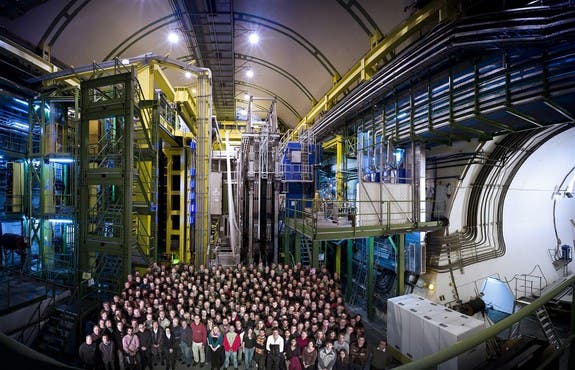The Large Hadron Collider at CERN has started doing some serious business. This time, an extremely rare particle containing equal parts of matter and antimatter popped up during experiments at the world’s largest and hottest particle accelerator.

The particle, named a B meson is made out of one quark (the building blocks of protons and neutrons) and one antiquark (the building blocks of antiprotons and antineutrons). What are antiprotons and antineutrons ? Well, they are just like their positive brothers… only they are negative. They have the exact same properties, only opposite in signs. For example, an antiproton has the exact same charge a proton has, but it is negative instead of positive.
All normal particles are thought to have antimatter analogues, and when matter and antimatter meets, they destroy each other. Scientists believe that at first, matter and antimatter were created equally, but if this is the case, then where is all the antimatter ? The most plausible solution would be that a huge quantity of matter and antimatter annihilated each other, and the remaining matter is what we see in our universe today.
The particle in case, the B meson, is thought to have been common right after the Big Bang, but it is believed that at the moment, it doesn’t occure naturally in nature. They aren’t stable, and after created, quickly start decaying; this process, a B meson decay has long been theoretized, but never seen before.
“Our experiment is set up to measure the decays of B mesons,” sayd Sheldon Stone, physicist at Syracuse University. “We discovered some new and interesting decay modes of B mesons, which hadn’t ever been seen before.”
Studying this type of behaviour can provide the answer to the ultimate question of antimatter – why do we see all this matter around us today, and no antimatter. Meanwhile, the search for the elusive Higgs boson is continued.
“When the universe was created in the Big Bang about 14 billion years ago, the number of particles and antiparticles was the same,” Stone said. “One of the major questions that we really don’t know the answer to is why are there particles around now and not antiparticles. By studying the differences we can learn maybe what the physics is behind that difference.
Was this helpful?



